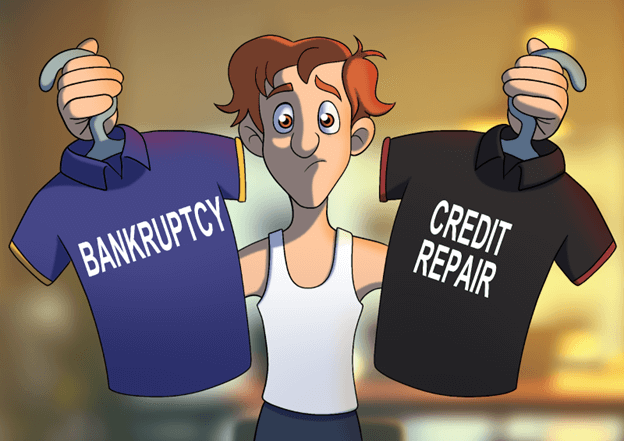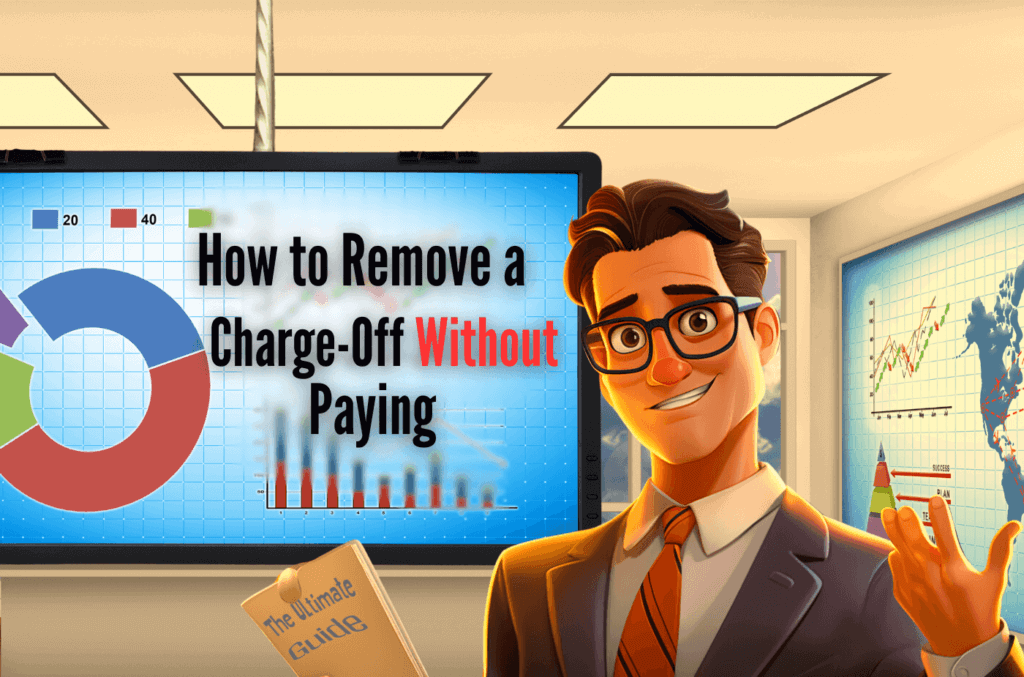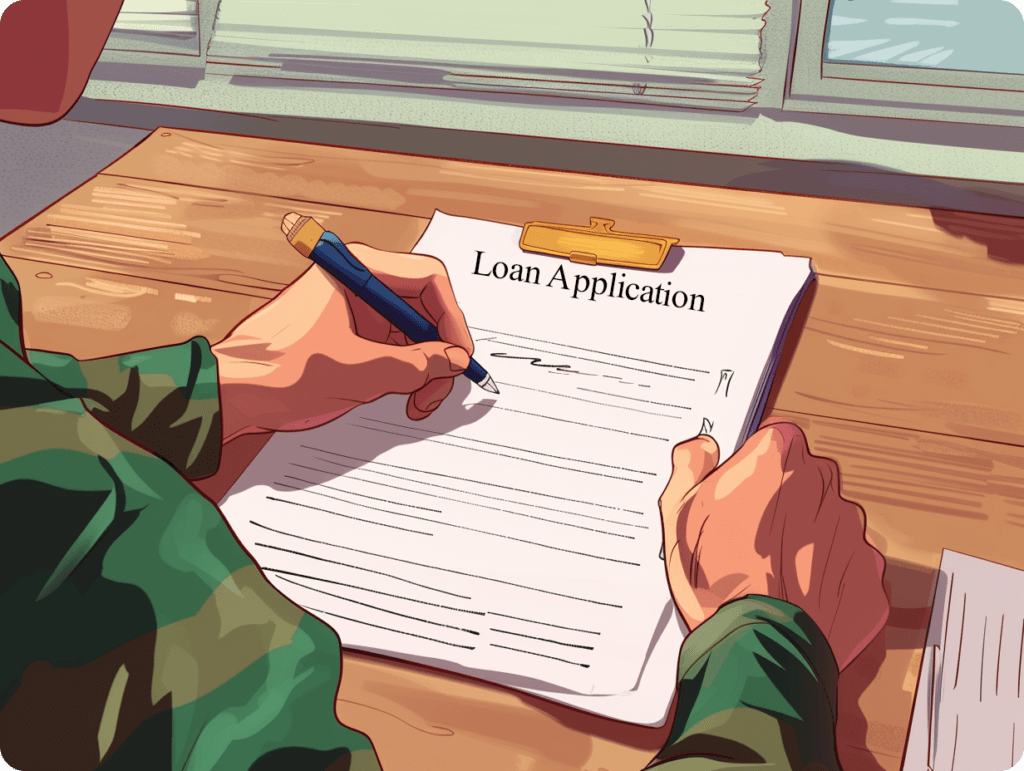- Blogs
- /
- Why is it Important to Find a Credit Card with a Lower APR?
Why is it Important to Find a Credit Card with a Lower APR?

Summary
Did you know the average American household carries thousands of dollars in credit card debt? Finding a credit card with a lower APR can be a game-changer. It can help manage and reduce this financial burden.
Lowering your APR means paying less interest. It saves money in the long run and gives you more control over your finances. By choosing a credit card with a lower APR, you can avoid high-interest debt and take big steps toward financial freedom.
This guide explores the importance of finding a credit card with a low APR. It covers types of APRs, factors affecting credit card APRs, and strategies to lower your APR. Understanding credit card APRs well helps you make informed decisions. It can improve your financial well-being.
Key Takeaways
- The Annual Percentage Rate (APR) is the cost of borrowing on a credit card, including interest charges.
- Cards have different APRs. So, it’s essential to understand this to manage your finances better.
- Credit cards can have variable APRs. They change based on factors like the prime rate or market conditions.
- APRs come in types. These include the APR for purchases, the APR for balance transfers, and the APR for cash advances.
- High APRs can hurt your credit score. This happens if you carry balances or miss payments. It leads to negative consequences, such as penalty rates.
- Finding a credit card with a lower APR can help you save on interest charges. It can help you pay off debts faster and improve your finances.
- Your credit score, market conditions, and the type of card you choose affect your credit card APR.
- You can lower your APR by negotiating with your credit card company. You can do this by researching and exploring 0% APR offers.
- Paying your credit card bill on time and in full each month helps avoid interest and builds a good payment history.
What You Need to Know About Credit Card APR

Finding a credit card with a low APR is crucial when you want a credit card. The Annual Percentage Rate represents the cost of borrowing your credit card. It includes both interest charges imposed by the credit card company. Cards have different APRs. Understanding this helps you manage your finances.
Credit cards can have variable APRs. The rate can change based on factors like the prime rate or market conditions. These fluctuations can lead to increases or decreases in interest pay. Knowing your card’s possible APR changes is vital. It helps in planning and budgeting well.
Types of APRs
Credit cards have several APR types, including purchase, balance transfer, and cash advance APRs. The purchase APR applies to regular transactions made using the card. The balance transfer APR applies when moving balances between cards. The cash advance APR is relevant when withdrawing cash from your credit line.
Each type of APR may have different rates and terms that impact the amount you pay in interest and fees. Understanding these differences can help you make informed decisions and choose when to use your credit card for different financial needs.
Credit Score Impact
Finding a credit card with a lower APR is essential. This becomes clear when you consider its impact on your credit score. High APRs can harm your score. They do this if you carry balances or miss payments. This leads to penalty rates and further damage to your rating.
Low utilization ratios measure the amount of used available credit, helping your credit score. Timely payments are crucial. Late payments incur penalties and trigger higher APRs, which compound financial challenges.
A good credit score opens doors to better credit cards with lower APRs. Regularly check your report. It lets you track changes to your score, ensuring you know shifts that impact future borrowing.
Importance of Lower APR Credit Cards
1. Saving Money
It is crucial to find a credit card with a lower APR, as it can help you save on interest charges. Lowering your interest rate means paying less overall when carrying a balance, leaving more money for other expenses or financial goals.
Cutting interest costs can help you pay debts faster and improve your finances. Comparing APRs enables you to select a card with maximum savings potential.
Lowering your interest rate is like getting a discount on borrowing money. Compare different credit cards. Focus on the APR. It shows how much extra you’ll pay for using credit. For instance, if Card A has an APR of 15% and Card B has 20%, choosing Card A could save you significant amounts in the long run.
Even slight rate differences matter. They can lead to significant savings over time. For example, if you carry a $1,000 balance on two cards, one has an 18% APR and 15%. Choosing the latter saves you about $30 each year in interest.
2. Avoiding High Rates
High APRs can lead to hefty interest charges. This happens when you carry balances forward each month. Paying off your entire monthly credit card balance helps sidestep these high rates. Late or missed payments may trigger penalty APRs, elevating your overall rate significantly.
Good financial habits help. These include making payments on time and using credit responsibly. They can contribute to qualifying for lower APR cards.
You avoid surprises from rate spikes by knowing your card’s terms. Avoid high-interest debt. Do this by watching your spending and repaying it well. Choosing low-rate cards has a benefit. More of your payment goes to reducing what you owe. It avoids them going toward servicing interests you’ve accumulated.
3. Credit Building
When you’re working on building or rebuilding credit, choosing a credit card with a lower APR can be a big help. Using a low APR card responsibly shows lenders you have good financial habits. This means paying your bills on time and ensuring your balances stay low.
Having a positive payment history through low APR cards can open doors and lead to better borrowing opportunities in the future. Start with secured or starter credit cards if you have limited or poor credit. They are tailored for individuals in similar situations.
4. Building Healthy Money Habits
Finding a credit card with a lower APR is crucial. It helps build healthy money habits. Choosing a card with lower interest rates encourages timely payments and discourages carrying high balances.
Lower interest rates mean less pressure to pay debts quickly due to interest charges. This allows you to focus on making regular payments. It prevents you from feeling overwhelmed by debt from the high rates of some credit cards.
Keeping up with reviewing statements and tracking expenses helps you stay in control of your finances. Also, budgeting and saving are easier when not burdened by high APR interest. These practices contribute significantly to achieving long-term financial stability.
Considering these aspects while picking a good credit card sets the stage. It helps build solid financial foundations. These will lead to better borrowing options.
5. Long-term Benefits
Discovering a credit card with a lower APR brings substantial long-term financial advantages. Lower interest charges can save you money over time, especially if you often carry a balance on your card. Lower APRs also make paying off debt faster and easier, making it more attainable and greatly improving finances.
Also, using low APR cards to build good credit takes time. It involves forming positive payment habits. This good credit history opens doors to more borrowing opportunities. It also gives access to better financial products. By prioritizing low-APR credit cards, individuals pave the way for better long-term financial stability and growth.
- Key Information:
- Saving money through reduced interest charges
- Improved chances of paying off debts faster
- Examples:
- Building a good credit history
- Accessing better borrowing options
6. Enhanced Financial Health
Getting a credit card with a lower APR saves money. It also helps with money by enabling faster debt repayment. It also fosters good spending habits. The ability to pay off balances quickly is due to lower interest rates. This ability leads to lower debt and more savings over time.
Also, keeping low-interest accounts helps build strong credit scores. These scores are critical for future loan approvals and affect rates on mortgages and car loans. By consistently using credit cards with lower APRs responsibly, people set themselves up for better financial health. This comes from having less debt stress and better access to financial opportunities.
Why is it Important to Find a Credit Card With a Lower APR?
Choosing low-rate credit cards cuts interest charges. These charges apply to balances carried forward each month. Less goes towards interest, and more funds from your payment chip away at the debt’s principal faster.
Lower rates make it easier to manage finances. They allow more flexibility in using funds for goals, not just debt. Peace of mind comes from knowing that each swipe doesn’t have high future costs. They won’t be from sky-high interest. Low-rate options create breathing room in budgets. They do this since creditors siphon off less income through steep interest fees.
Factors Affecting Credit Card APR

1. Credit Score
Your credit score is crucial in determining the APR you qualify for on a credit card. A higher credit score typically means you can access credit cards with lower APRs. Borrow responsibly and make payments on time. This is essential to keeping a good credit score.
Check your credit report often. You can spot errors or areas for improvement. Raising your credit score improves your financial health. It opens doors to better financial products with lower APRs.
2. Economic Changes
Understanding how markets affect APRs is one way to get good credit card terms. Economic changes directly impact credit card APRs. For instance, during economic upswings, interest rates tend to rise, which affects credit card rates.
Watching financial news and indicators provides valuable insights. They can show possible future rate changes. Staying informed about markcard et trends lets you predict shifts in APRs. This helps you make better decisions when picking a with a lower rate.
3. Type of Card
The type of card you choose also significantly impacts the APR associated with it. Credit cards have different APRs, so research and compare them before choosing the best one.
Rewards cards often have higher APRs than basic or secured ones. Similarly, store cards might have higher rates than bank ones. Secured credit cards help people build or rebuild credit. They have lower interest rates.
How to Lower Your Credit Card APR
1. Negotiating APR
Assessing your financial situation is essential before applying for a credit card. Understand how you intend to use the card and if you plan to carry a balance. Researching credit cards and comparing their APRs can help you find the best one.
Alongside APR, consider rewards, fees, and other benefits each card provides. This information will prepare you. It will empower you to make an informed decision when choosing a credit card.
When discussing APR with credit card representatives, ask about rates and terms. Ask about any promotions or introductory rates. These lower your overall interest costs. Clearly, say you want a credit card with a lower APR.
Taking notes during these discussions can aid in comparing different offers later on. Avoid negotiating for better terms if you believe you meet the criteria.
2. Annual Reviews
You need to review your credit card’s APR often. This is crucial to ensure you’re getting a good rate. Check for any changes in terms and conditions that might impact your APR. Compare your current card with other options in the market to see if you can save money. Assess if your spending habits or goals have changed. This may require a different APR.
Reviewing your credit card’s APR each year helps you make informed decisions, such as whether to keep using it. By staying updated on your APR, you can avoid paying too much interest and find better deals elsewhere.
Comparing Credit Card APRs
1. Research Methods
You can employ various research methods. Firstly, online resources like official credit card issuer websites should be utilized. These platforms offer accurate and up-to-date information on different credit cards’ APRs. Reading customer reviews also provides valuable insights into user experiences with specific cards.
Consult financial experts or advisors specializing in credit cards. They can offer personalized advice based on your situation and habits. Also, trusted comparison websites or online comparison tools are crucial. They provide side-by-side APR comparisons. This makes it easier to choose the best card for your needs.
2. Comparison Tools
Online comparison tools are invaluable when searching for a credit card with a lower APR. These platforms simplify the process and let users compare critical aspects, including interest rates, fees, rewards, and introductory offers. Users can compare these features across different credit cards.
By using these tools well, people can save time and effort. They can make smart choices about their credit card based on their financial needs. Also, these tools let users compare things quickly. They can do this without visiting many websites. They also won’t need to gather information manually from many sources.
Online comparison tools are fast. They show all the needed info in one place. They save you from the need to research across many places or make physical bank visits.
Filters in these tools let users customize searches. By setting these filters accordingly during the search process, you can find your specific preferences, like the APR you want or the reward program cards offer.
Working Mechanism of Low-Interest Cards: Interest Calculations

APR determines interest on your balance. Knowing the interest calculation formula allows you to estimate costs accurately. Most cards use the average daily balance method for charges. The higher the APR, the more interest you pay, so a lower rate saves money.
Knowing how interest is calculated empowers you. It lets you make informed choices about using credit cards. It helps manage balances efficiently and avoid unnecessary debt accumulation. For example, if you have a $1,000 balance at an 18% APR, you’ll pay $180 in interest each year. But, at a 12% APR, it falls to $120 a year.
Billing cycles are critical. They determine when transactions appear on your statement. Paying off balances within this period’s grace time avoids additional charges. Knowing your cycle end date lets you plan payments well. It helps you avoid late fees or higher rates from missed deadlines.
Understanding billing cycles helps manage payments better. It ensures timely settlements and avoids extra costs, such as penalty fees or higher APRs from missed payments within the cycle. It also helps people keep up with their bills and maintain good credit.
Assessing Your Credit Card Situation
It is crucial to review your credit card’s APR regularly. Compare it with other available options to ensure competitiveness. Evaluate whether the rate effectively aligns with your financial goals and spending habits. Changes in the market can impact your current APR. So, staying informed is essential.
Recheck your current APR to ensure you maximize your card’s value. Stay updated on the market rates. Then, you can decide whether to stick with your current card or switch to a better option. Market fluctuations can affect APRs, making it necessary to stay vigilant.
A needs analysis helps determine what features matter, which is critical when choosing a credit card. Prioritize whether having a lower APR is crucial or if other benefits precede it. Consider how much interest savings mean based on how frequently you carry a balance.
Consider how often you plan to carry a balance. This is key to choosing the right APR for your credit card. A lower APR might be better for saving in the long term, but cards with rewards have higher interest rates.
Exploring 0% APR Credit Cards: Introductory Offers
When you open a new credit card account, introductory offers often have lower APRs. However, they are for a limited time. These offers can help you, especially for big purchases or carrying a balance for a short time.
It’s crucial to understand the terms of these offers. This includes when the regular APR will start. Consider how long you will need the lower APR. Also, consider if it fits your financial goals.
Choosing an introductory offer requires comparing its benefits to rewards programs. You also need to consider annual fees. If you need the lower APR for a long time, ensure it fits your financial strategy well. Carefully evaluate these introductory offers. Then, you can make informed decisions that match your financial goals.
- Pros:
- Lower interest charges initially
- Ideal for large purchases or temporary balances
- Cons:
- Regular APR may be higher
- Need to monitor the transition to regular rates
Avoiding Interest Charges on Credit Cards
Paying your credit card bill on time is essential to avoid late payment fees and penalty APRs. It also prevents extra charges and builds a good payment history, boosting your credit score.
Missing payments can lead to increased interest rates and harm your creditworthiness. Setting up automatic payments or reminders can ensure you never miss a due date. It will keep your finances in order.
Remember, paying off your credit card balance in full each month eliminates the need to pay interest. This practice also helps keep a healthy credit utilization ratio. It boosts your credit score.
By avoiding interest costs, you free up funds. You can use them for other financial goals or expenses. Review your statements often. This is crucial for accuracy. It helps you find any fraud quickly.
Making total balance payments showcases responsible financial habits and reduces debt accumulation. It demonstrates discipline in managing finances effectively while avoiding unnecessary interest charges. You show financial responsibility when you always pay the entire balance on your credit card. This reflects well on your financial health.
Summary
Understanding credit card APRs is key for stability and sound judgment. Finding a credit card with a lower APR could lead to significant savings. You would pay off debt faster and have better credit.
Many factors set your APR. These include your credit score, the market, and your card type. You may take charge of your money. You can set the road for a better financial future by lowering your APR. You can do this by haggling with your credit card issuer and looking into 0% APR offers.
Check your credit card APR regularly, make regular payments, and avoid extra interest charges. These are all important to staying financially stable. Adding these practices to your financial management can bring long-term benefits and a more secure outlook.
FAQs
Why is it essential to find a credit card with a lower APR?
Finding a credit card with a lower APR is crucial because it can save you money on interest charges over time. A lower APR means you pay less interest when carrying a balance. It helps you manage your finances better.
What factors affect Credit Card APR?
Factors influencing APR include your credit score, card type, market conditions, and the issuer’s policies. Maintaining a good credit score and choosing the right card type can help you secure a lower APR.
How can I qualify for a good APR on my credit card?
Focus on improving your credit score to get a good APR on your credit card. Do this by making timely payments, reducing debt, and using little credit. Issuers often offer better rates to customers with firm credit profiles.
What are some tips for lowering my Credit Card APR?
You can lower your Credit Card APR by negotiating with your issuer, transferring balances to cards with promotional rates, and showing responsible financial behavior. Being proactive in managing your finances can lead to favorable rate adjustments.
Why should I explore 0% APR Credit Cards?
Exploring 0% APR Credit Cards lets you make purchases without paying interest and transfer balances without paying interest. It can help consolidate debt or make big purchases, and you avoid immediate interest costs.
Our Latest Blogs:
FREE Strategy Session to Fix Your Credit Blogs / In a society where credit scores can significantly influence economic...

ThisIsJohnWilliams
FREE Strategy Session to Fix Your Credit Blogs / Facebook Twitter Linkedin Instagram Share Summary A credit freeze is...

ThisIsJohnWilliams
FREE Strategy Session to Fix Your Credit Blogs / Facebook Twitter Linkedin Instagram Share Summary For most people, rent...

ThisIsJohnWilliams
FREE Strategy Session to Fix Your Credit Blogs / Dealing with financial difficulties is overwhelming. But when faced with...

ThisIsJohnWilliams
FREE Strategy Session to Fix Your Credit Blogs / Facebook Twitter Linkedin Instagram Share Summary Get your financial freedom...

ThisIsJohnWilliams






